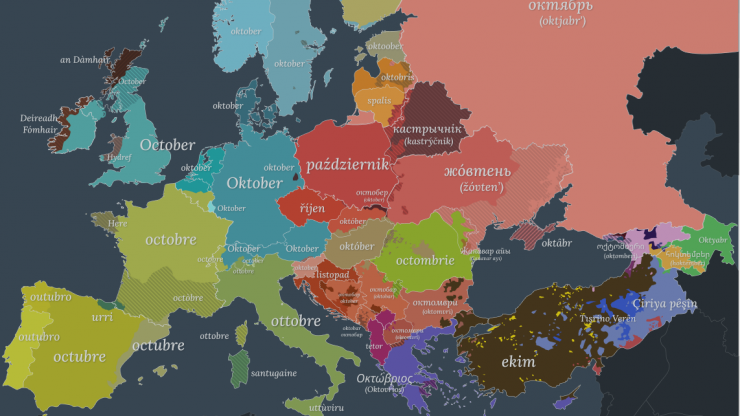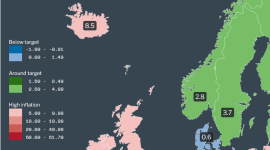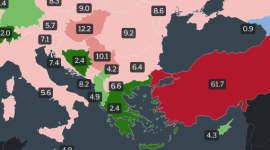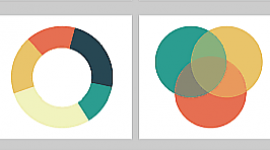In this post, we will welcome October by exploring what the word “October” looks like in different languages, especially in languages of Europe. Also, as always, we will explore the etymology of “October.”
Finally, as it’s customary by now, there are two maps. The first one shows how October is written in different European languages and countries. That map shows different language groups and is an interesting overview.
The second map shows groupings based on the word’s etymology. Both offer interesting insights and hopefully encourage you to do your deep dives and explore the linguistic variety.
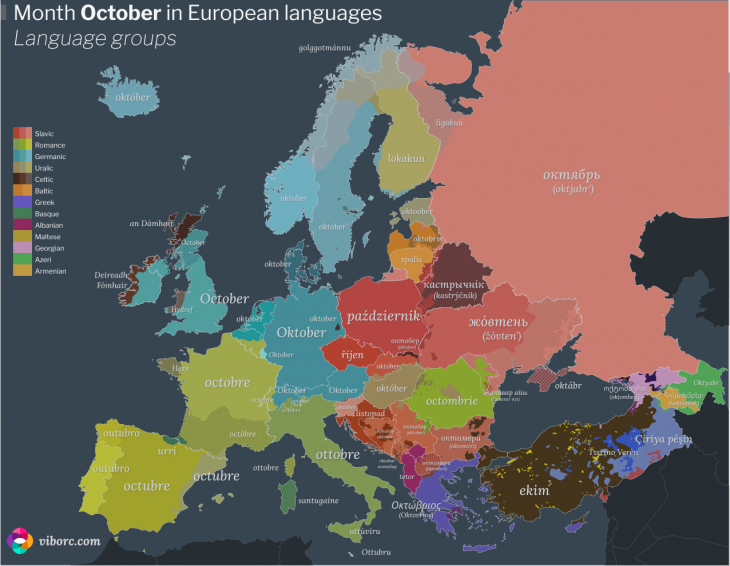
Common origin from Latin
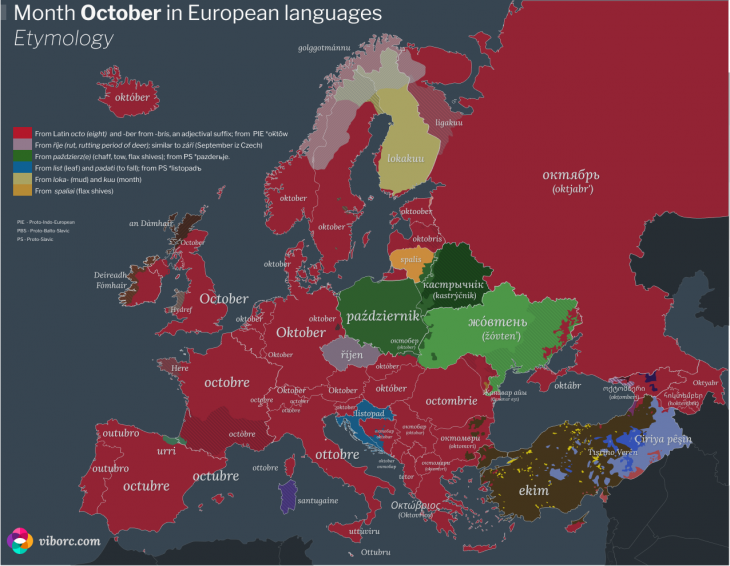
The origin of October and what does it mean?
Just like it’s the case with most other months, most European languages use some possible variations of the word October, taken directly from Latin.
For example:
- English (October),
- German (Oktober),
- Portuguese (outubro)
- Spanish (octubre),
- Italian (ottobre),
- Greek (Οκτώβριος / Oktovrios)
- Macedonian (oктомври /oktomvri).
That root is from the Latin word octo– meaning eight. Furthermore, the origins can be found in Proto-Italic *oktō coming from Proto-Indo-European *oḱtṓw.
How is October the eighth month of the year?
Originally meaning the eight month of the year, October is today the tenth month of the year. How’s that possible?
The reason is that the Romans used a calendar in which the first month of the year was March (before the Julian calendar reform in 46 BCE shifted the new year two months back).
Before that, the original Roman calendar was used, also known as the Calendar of Romulus, to better illustrate the reasoning and origins of names.
The Calendar of Romulus
| English name | Meaning | Latin Name |
|---|---|---|
| 1. March | Month of Mars | Mensis Martius |
| 2. April | Month of Aphrodite | Mensis Aprilis |
| 3. May | Month of Maia | Mensis Maius |
| 4. June | Month of Juno | Mensis Iunius |
| 5. July | Fifth month | Mensis Quintilis |
| 6. August | Sixth month | Mensis Sextilis |
| 7. September | Seventh month | Mensis September |
| 8. October | Eight month | Mensis October |
| 9. November | Ninth month | Mensis November |
| 10. December | Tenth month | Mensis December |
Caucasus
The Georgian, Armenian, and Azeri languages also derive from the same word, even though each of those three languages uses different scripts for writing it:
- Georgian (ოქტომბერი / okṭomberi)
- Armenian (հոկտեմբեր / hoktember)
- Azeri (Oktyabr)
Croatian is simple — the month of falling leaves
The Croatian word for October is listopad. It comes from the words list (leaf) and padati (to fall), originating from Proto-Slavic *listopadъ.
A fun fact is that the same word (listopad) means November in both Polish and Czech.
The Czech word říjen comes from za říje – again, meaning the deer rutting season, pretty much the same origin it uses for September (just like the Croatian rujan).
Ukrainian
Ukrainian žóvten’ (жóвтень) derives from жовтий, meaning yellow, which again comes from Proto-Slavic *žьltъ.
So, in summary, you could translate it as a month of yellowing of trees.
Poles, Belorussians, and Lithuanians all deal with flax shives
The word październik in Polish originates from the word paździerz, which means flax shives. These were traditionally produced in October.
The word kastrýčnik (кастрычнік), which can also mean flax shives, is where the Belarusian word for October comes from. And lastly, the word spalis comes from the Lithuanian word spaliai, another word for flax shives.
How is Albanian tetor similar to October?
Although it might not sound similar to October, the word tetor comes from the Albanian word for eight (tetë).
That word, though, comes from *(a)te with the suffix -të, and then from Proto-Albanian *aktṓ, which, again, comes from Proto-Indo-European *oḱtṓw.
Celtic languages
The name October in Welsh is referred to as Hydref, which is likely derived from the word hydd (“stag”) and the word bref (bleating).
Breton Here and Cornish Hedra come from the same etymological root. Somewhat similar meaning to the Czech’s October and the Croatian September.
The Irish Deireadh Fómhair translates to the end of autumn or harvest.
Finnish, Karelian, and Basque languages
The Finnish language has an interesting story. Their word for October, lokakuu, derives from loka- meaning mud or dirt and kuu, meaning month. The same meaning is found in Karelian ligakuu – mud month.
The Basque word urri seems to originate from at least two different directions. One defines its meaning as little or scarce, while others connect its meaning to the month of hazelnuts or the month of water.
Here’s how you can support viborc.com
We hope you like our content. You can support us in several ways. First, if you are using ad-blocking software, please consider adding us to a safelist. When sharing our content, please link back to the source. When sharing on Instagram, please tag @viborccom. The same is for Twitter (@viborccom).
Thanks! Hvala! Danke! Дякую!
ABOUT THE AUTHOR
